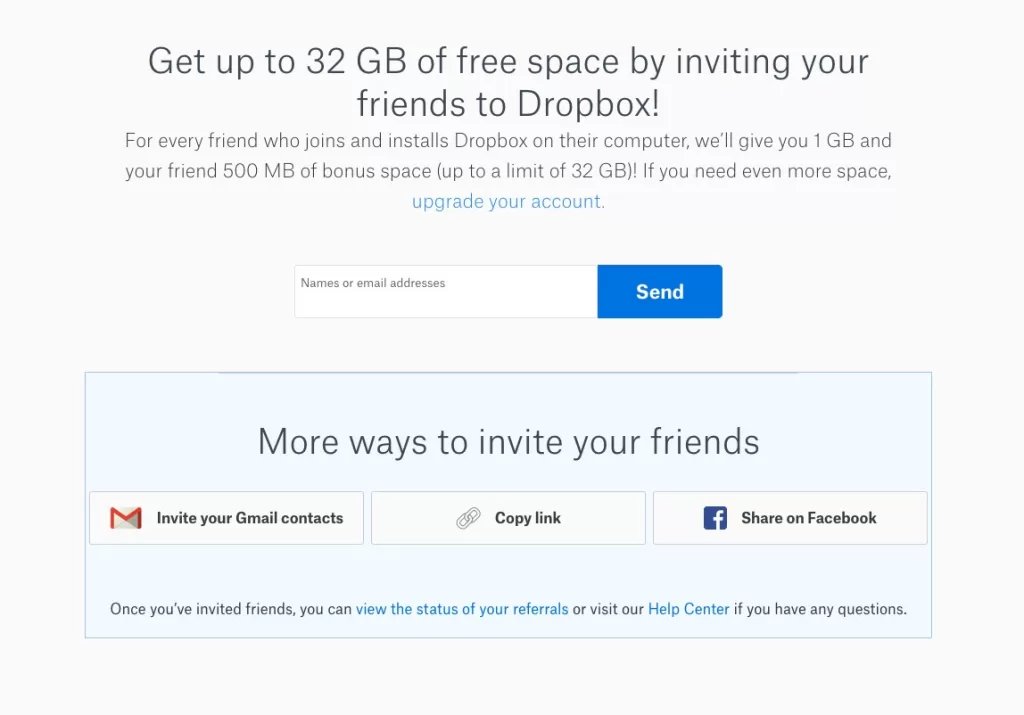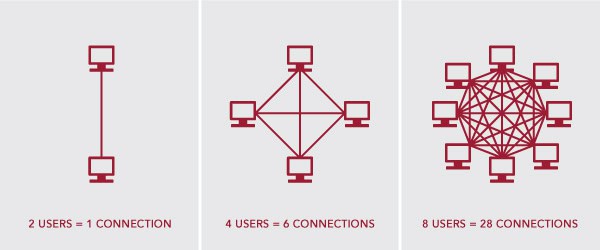Eric differentiates viral growth from word-of-mouth (organic), in his words:
“Distinct from the simple word-of-mouth growth… Instead, products that exhibit viral growth depend on person-to-person transmission as a necessary consequence of normal product use. Customers are not intentionally acting as evangelists; they are not necessarily trying to spread the word about the product. Growth happens automatically as a side effect of customers using the product.”
However, it’s important to distinguish between VIRAL vs. word-of-mouth (I’ll elaborate more under the STICKY ENGINE). I would like to introduce a framework here because there are elements in it that will give you ideas on how to design offerings that share themselves.
STEPPS Framework
What makes a campaign viral? Why do some social media posts or news receive more attention and discussion than others? What motivates people to share? Jonah Berger’s STEPPS framework from his book Contagious: Why Things Catch On is an excellent tool for increasing shareability or referability. It’s not limited to designing marketing campaigns; it can also be directly integrated into your offering.
| SOCIAL CURRENCY | What makes the sharer look good and want to spread the word? |
| TRIGGERS | What keeps it top of mind and keeps them talking? |
| EMOTION | Induce sharing through a heightened sense of arousal. |
| PUBLIC | Make your customer’s opinions and behaviors visible. If people can see it, they will want to imitate it. |
| PRACTICAL VALUE | Adding value to the receiver. |
| STORIES | Incorporate a narrative. |
Let us go through the STEPPS below and a few examples for each. If you’re interested in a more in-depth exploration and additional detailed examples do consider reading Jonah’s relatively short book.
A quick reminder from Jonah before we dive in:
“Influencers help, but alone, aren’t sufficient… You’re truly viral if you can get the average person to want to talk about you.”
- Define the inner remarkability of your solution or campaign (giveaway competitions or free upgrades).
- Make people feel like insiders who have exclusive information no one else has (closed or private invitation-only groups tend to grow more quickly than open or public groups that anyone can join).
- Invoke a sense of scarcity.
- Or give them status (people love to brag) through gamification: quantify performance.
TRIGGERS
Should happen often, in close proximity to your offerings, and shouldn’t already be strongly associated with something else.
Examples from the book include the Kit Kat slogan, ‘Have a break, have a Kit Kat,’ which associates the snack with break time, and Budweiser’s ‘Wassup?’ ad, which associates the beverage with the slang commonly used by male Generation Xers at parties.
EMOTIONS
A heightened state of arousal can lead to increased sharing. Marketers, as well as salespeople, frequently opt to evoke positive emotions or highlight the pleasure and benefits of their offerings, rather than resorting to negative emotions or emphasizing pain. They fear doing so might associate their brand with negativity and potentially deter customers.
However, individuals perceive benefits differently. A tool that saves time might appeal to one person as an opportunity to dedicate more time to their health, to another as a chance to be more productive, and to yet another as an opportunity to spend more time with their family. Conversely, pain is often more relatable.
Negative emotions can be employed effectively both to increase sharing and to more persuasively engage our prospects, provided we understand how to do it correctly. The key lies not merely in informing them that your solution alleviates their pain. Instead, you must guide prospects through a transformative journey: assist them in recognizing their pain, demonstrate how your solution addresses it, and lead them to their desired state of pleasure. This approach allows you to be associated with the transformation rather than the pain.
In Jonah’s book, he shares the key discovery that it’s not about positive vs. negative emotions; instead, sharing is correlated with how arousing an emotion is. For example, contentment is positive but non-arousing, whereas frustration (voicing complaints) is negative but arousing. Content that speaks to the latter is more likely to be shared.
That said, I’m not suggesting fear-mongering. Instead, I want to encourage you to leverage emotion by focusing on the why (both objectives and motivations) that underlies what your customer is trying to accomplish with your solution. Why is your solution meaningful to them? What does it empower them to achieve?
Search Google’s “Parisian Love” ad on YouTube for a great example.
PUBLIC
Is about increasing visibility. This creates social proof and further drives adoption. If thoughts and beliefs are private, you organize an event, or if your solution is used transiently, consider how you might generate visible behavioral residue.
Examples include the ALS Ice Bucket Challenge, “I voted” stickers, and “Sent via iPhone”.
PRACTICAL VALUE
Focuses on the receiver but may also overlap with SOCIAL CURRENCY which emphasizes the sharer. How can you help the receiver make better or more confident decisions, save time, save money, earn more money, avoid costly mistakes, or have a good/better experience? The key here is to be specific. If it’s too general, people will struggle to think of who to share it with.
For instance, a guide on choosing shoes vs. a guide on choosing ballerina shoes. Despite targeting a narrower audience, the latter will get shared more as readers can readily identify who would benefit from it.
STORIES
Are shared more than facts. Discover compelling stories and integrate them into your campaign. These narratives could revolve around your customer’s journey to empowerment with the help of your solution, your company’s origin story, or your impact story (highlighting the lives you are positively affecting through your #dogoodbusiness).
Publicity stunts may get you a lot of attention but the story gets blurred as they are shared and passed along. The Evian Roller Babies and Progressive Insurance Radio Ad are some examples of bizarre attention-grabbing campaigns not connected to a compelling story. Despite garnering high viewership, they are ineffective because people may remember the ad but often forget the associated brand.
Instead, a good story should be related to your solution and ensure that your brand remains a key part of what sticks. Google’s Parisian Love ad mentioned before, Dove Evolution, and Bertha Benz are some excellent examples of storytelling that seamlessly associate the brand with the message.
Case Study: Dropbox
Dropbox is a well-recognized example of the VIRAL ENGINE of Growth. In their early days, they began with traditional paid marketing but found little success. Despite this, user acquisition continued to thrive. Upon closer inspection, they realized people struggled to grasp their novel way of file sharing through the cloud. Traditional ads couldn’t effectively convey the value of their platform. Instead, growth was driven by users telling their friends how amazing it was. As a result, they abandoned their traditional marketing efforts and focused instead on making it as easy as possible for their users to spread the love.

Notice the benefit to the sharer (SOCIAL CURRENCY) + the receiver (PRACTICAL VALUE). They also made it easy to share (simply enter their email and hit send, integrating Gmail contacts, copy the sharing link with a simple click of a button, sharing to Facebook). Finally, they make it easy for you to follow up on the status of your referrals.
Other notable key lessons from his book include:
- You don’t necessarily need to include all elements of STEPPS to go viral, but in general, the more you include, the better
- It doesn’t only apply to ad campaigns; virality can also be built directly into your offerings. Some examples include: Please Don’t Tell (a speakeasy cocktail bar in New York City), Duolingo (the language learning app), and Election Ink. All of which have directly built elements of virality into their product and service offerings to increase shareability.
ASSIGNMENT
What are some elements from STEPP that you can incorporate into your solution or campaigns?
Here are some additional ideas:
Buy 1, give 1
If you have a solution that people need to first try or experience to understand what makes it special, you could run a “buy 1, give 1” (not “get 1”) campaign. In this campaign, you would apply a model similar to a pay-it-forward campaign. Instead of giving prospects an additional product when they make a purchase, you have them give away a free product to someone nearby. By doing so, you’re integrating referability directly into the transaction, encouraging them to advocate on your behalf and feel good while doing so.
Free Service for an Introduction
Offering a free service in exchange for a brief introduction or explanation. If you have an emcee or translator training program, you could offer a free emcee or translator for an event in exchange for a few seconds or minutes to acknowledge your company.
This gives the prospect a free service, gives you publicity, and is a live learning experience for your emcees. Triple win! It also enables you to show, rather than tell, by allowing attendees to witness the quality and experience the difference first-hand.
Automate exposure
“P.S. Get your free e-mail at Hotmail” was inserted into the signatures of emails sent by those who used their service (before they were sold to Microsoft). It increased visibility (PUBLIC) and helped them explode! They got 1 million sign-ups in 6 months, hit the 2 million mark 5 weeks later, and had 12 million users about 18 months after launching. Eventually selling to Microsoft for $400 million. The modern-day version of this is “Sent from my iPhone”. PayPal is another example Eric mentions in his book. When you send money to someone using PayPal, they are automatically exposed to it.
Network effect of social platforms (Reddit, LinkedIn, etc.)

The more people are on it, the more others want to join. This is to avoid missing out and because the platform becomes more valuable when there are more people in your network already using it; this happens because there’s an increased amount of content from people you’re interested in and more opportunities for introductions.
Be strategic and selective about your ambassadors
Fashion brands like Nike, Spanx, and Eileen Fisher, as well as brands that leverage status such as GoPro, Bang & Olufsen, and Tesla, also exemplify viral growth as a byproduct of usage. Prospective customers are influenced by the desire to purchase when they observe current customers using these products (PUBLIC).
It’s not about gauging your customers or encouraging unsustainable fast fashion, I share these examples here instead to encourage you to be strategic about how you position your brand, who you choose to go after, and how you can make your offerings more visible.
